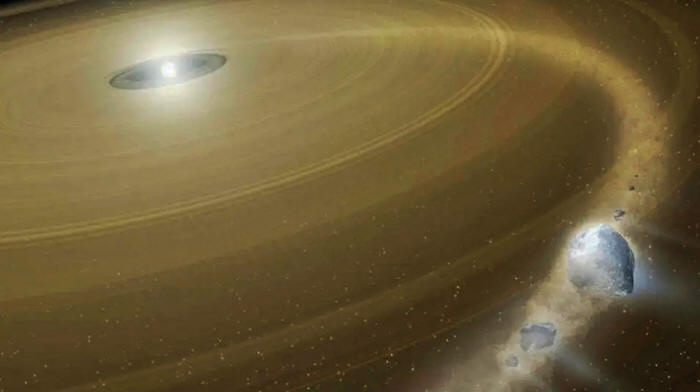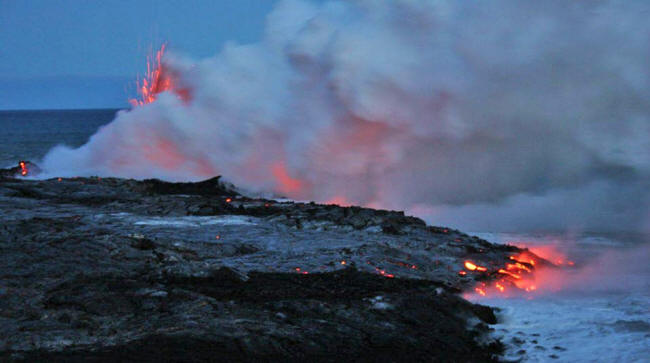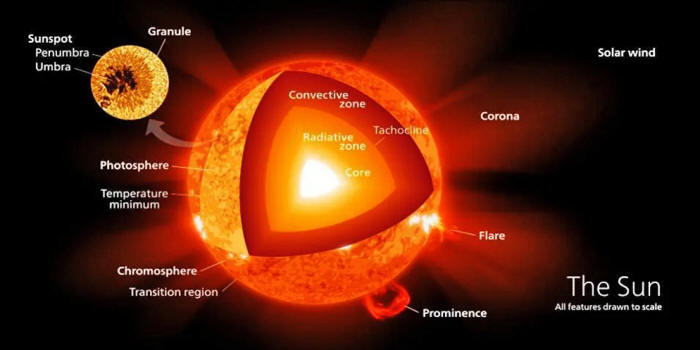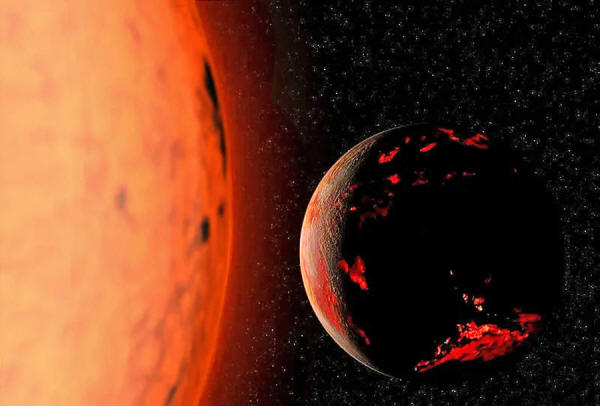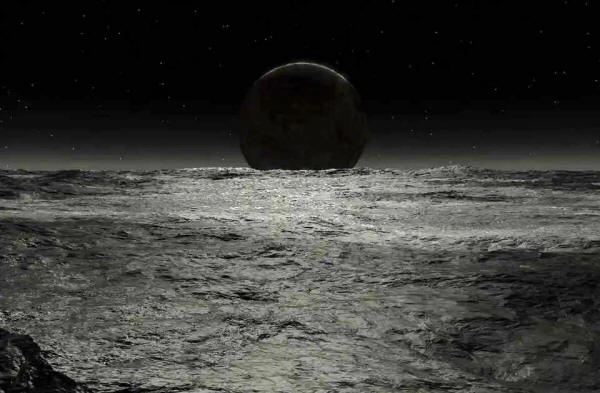|
by Ethan Siegel there are four ways our planet will actually experience "the end,"
no
matter how we define it. the tidal forces become significant enough to overcome the gravitational binding energy, ripping the object apart and stretching it out into a ring, before it rains down and settles on the surface of the more massive body.
The
sun's remnant may do this to the Earth in ~1026 years.
Various incarnations of the reported end of the Earth come in a variety of forms:
Every few years, or maybe even every few months (depending where you look on the internet), a new story, speculation, or conspiracy will go viral, claiming that the end of the world is near.
Some claims are very
specific; others are more vague.
Based on what we know, there are four ways the Earth will meet its eventual end, and they're all going to happen someday.
Here's what that's going to look like.
was the world's first thermonuclear device: where fission and fusion reactions combine to create a more energetic yield than a fission bomb alone can achieve. Unlike the bombs dropped on Hiroshima and Nagasaki, where the yield was measured in the tens of kilotons of TNT, thermonuclear devices can reach tens or even hundreds of megatons of TNT-equivalent. (Credit: "Ivy Mike" atmospheric nuclear test
November 1952 /Wikicommons)
1.) The extinction of humanity
Although there are over seven billion of us (and growing) today, humans have only been around in our current form for under a million years, with all of the great apes having existed for only a few million years.
As the Earth changes, the pressures on different species to survive will change as well, all while random genetic mutations occur.
Some mutations are
beneficial to surviving the present pressures, and those are the
genes that are most likely to get passed on.
have been around for a cosmic blink-of-an-eye: under half a million years. Based on how evolution works, it is unlikely there will be
any
humans left even just a few million years from now.
Humans themselves face pressure from all sorts of factors, including:
like an asteroid strike, occurs or not, the eventual demise of humanity is inevitable. Whether we have descendants that survive or not is immaterial; we will go extinct on this world eventually. On geological and astronomical timescales, this is likely to happen sooner than later, and will be
the
first "end of the world" for us. when lava or some other superheated material enters it. But in the far future, the Sun's energy will be enough to do it,
and on
a global scale.
Only the right combination of all of these parameters has given us a life-supporting planet with copious amounts of liquid water directly at the surface.
If any of these
properties were significantly different from what they actually are,
the diversity and variety of life that our planet possesses simply
wouldn't be here today.
Yet thanks to the future evolution of our Sun, our oceans won't be around forever.
As helium builds up in
the Sun's core, the region in which nuclear fusion occurs, it
expands with dire consequences for us.
This cutaway showcases the various regions of the surface and interior of the Sun, including the core, which is where nuclear fusion occurs. As time goes on, the region of the core where nuclear fusion takes place expands, causing the Sun's energy output to increase.
A similar process occurs in the interior of all stars.
After another one-to-two billion years at the most, the amount of energy the Sun gives off will increase to a certain critical point:
As the oceans boil and the atmosphere fills with water vapor, the greenhouse gas effects will take over, causing Earth's temperature to rise catastrophically.
Our planet will become more like Venus than like Earth today, becoming totally inhospitable to life on the surface.
The cosmic experiment of complex, differentiated organisms will have come to its natural end.
five to seven billion years from now, the sun will exhaust the hydrogen in its core. The interior will contract, heat up, and eventually helium fusion will begin. At this point, the sun will swell, vaporize Earth's atmosphere, and char whatever's left of our surface. But even when that catastrophic event occurs, Earth may not be swallowed, remaining a planet,
albeit
a very different one from the world we know today.
With enough heat and
energy, that's exactly what would happen to any world, with Mercury,
the closest planet to the Sun, being a prime example.
As it expands, it cools, but also becomes far more luminous, all while the core continues to contract and heat up, on the path to begin fusing helium.
As the Sun transitions from a main sequence star to a sub-giant, and then from a sub-giant to a full-fledged, helium-burning red giant, nothing on Earth will withstand this solar onslaught.
the Earth itself may be swallowed or engulfed, but it will definitely be roasted as never before. However, if we can migrate Earth away from the Sun prior to this, not only could we avoid being consumed, but life on our planet could thrive for billions of additional years
than if
we simply did nothing.
Although helium-burning will last a very long time - hundreds of millions to billions of years - eventually the core will run out of helium as well.
When this occurs, the core continues to contract and heat up, but no additional fusion reactions will ensue.
The Sun will soon die, being reduced to a white dwarf, while its outer layers are blown off into a planetary nebula.
If the Earth doesn't get swallowed during the red giant phase, and the jury is still out on that one, our planet will remain as a rocky, roasted remnant, floating through space in its orbit around a stellar corpse.
or singular gravitational interactions with passing large masses, can result in the disruption and ejection of large bodies from stellar and planetary systems. In approximately 1% of simulations of the next 5 billion years of our Solar System, 1 or more of the inner planets gets ejected due
to
gravitational instabilities. AIP Conference Proceedings, 2012)
It will remain intact, orbiting around our central, stellar corpse, until one of the following things happen:
if nothing ejects or collides with the remnants of Earth, eventually gravitational radiation will cause us to spiral in, be torn apart, and eventually swallowed
by
the remnant of our Sun.
And it is not mere speculation that all four of these ends will come to pass, but the robust predictions of the pinnacle of our scientific achievements.
What will our choice, collectively, be as a species?
Ideally, we'll guide our planet's future with our feet firmly planted in consciousness and scientific reality, using the best knowledge and most successful theories we have to guide us, using our capabilities to ensure the safety, security, freedom, and prosperity of all humanity.
It's the ultimate dream of a scientifically literate society, and the one hope we have of pushing out that first "end":
|


